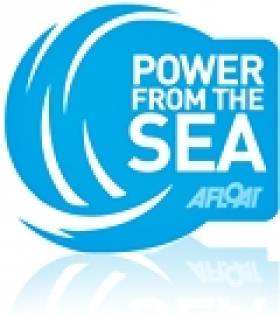Displaying items by tag: Hydro
Hydro Storage Scheme Among Clare's Renewable Energy Plans
#hydroenergy – Clare County Council today outlined plans to facilitate the development of Pumped Freshwater Hydro Energy Storage facilities similar to those already developed at Turlough Hill in County Wicklow.
Three locations, namely Slieve Callan, Slieve Bernagh and Woodcock Hill, have been marked as 'indicative areas' for the proposed facilities which are outlined in the newly developed Draft Clare County Renewable Energy Strategy.
Just 24 hours after the ESB confirmed that its 40-50m euro West Wave project will go ahead off Killard in West Clare, Clare County Council has become one of the first local authorities in the country to seek to incorporate such a Renewable Energy Strategy into their County Development Plan.
The Draft Strategy outlines the potential for a range of renewable resources, including bioenergy and anaerobic digestion, micro renewables, geothermal, solar, hydro, energy storage, onshore and offshore wind, wave and tidal energy.
Some of the key objectives set out in the Strategy include the following:
• To maximise use in the County, of the available bioenergy resource to exceed national targets for renewable heat of 12% and 10% by 2020.
• To favourably consider the redevelopment of brown field sites in predominantly industrial / commercial areas for large solar PV projects.
• To work in partnership with the marine renewable energy sector (wave, tidal and offshore), DECNR, EirGrid and other relevant stakeholders to deliver the key actions recommended by the Ocean Renewable Energy Development Plan (OREDP) and Grid 25, ensuring that electricity generated off the coast of County Clare can be exported to the demand market subject to the requirements of all environmental legislation.
• To collaborate with EirGrid over the lifetime of the Strategy to ensure that County Clare has the grid infrastructure in place to maximise its potential for renewable energy generation to meet its own energy needs and to enable export to the demand market.
• To require all planning applications for new buildings to demonstrate how their designs have incorporated energy efficiency or passive measures, as a means of reducing future reliance on traditional fuel sources.
Members of the public have been invited to review the Draft Strategy and submit written submissions or observations on or before 11th April 2014.
Councillor Joe Arkins, Mayor of Clare welcomed the publication of the Draft Strategy, describing the harnessing of renewable energy resources as "a key method of attracting inward investment to County Clare".
The Mayor continued: "Clare County Council is taking a proactive approach to facilitating renewable energy development and through this Strategy is helping to guide the location and development of renewable energy proposals. A clear opportunity exists in Ireland, and particularly in County Clare, to exploit renewable energy resources. In doing so, the Council is seeking to create clean energy and attract inward investment to the County and the country at a time when Ireland is searching for solutions to many social and economic issues."
"The publication of this Draft Strategy is timely as it coincides with the announcement by the ESB of a wave energy project near Doonbeg which will have a spend of up to 50m euro with significant positive spinoffs for the local community and wider region," added Mayor Arkins.
According to Clare County Manager, Tom Coughlan: "The Draft Strategy acknowledges the significant contribution that a range of renewable resources can make to County Clare being more energy secure, less reliant on traditional fossil fuels, enabling future energy export and meeting assigned targets.
He added: "Clare is particularly fortunate to possess considerable wind, biomass, wave and tidal resources. It is imperative that we have a strategy in place to maximise the potential of these resources while minimising any environmental impacts, thus enabling the County to achieve a low-carbon economy."
Commenting on the proposal to facilitate the development of Pumped Freshwater Hydro Energy Storage (PFHES) facilities, Senior Council Planner Gordon Daly said such technology was "relatively underutilised in Ireland but presented significant potential for the domestic renewables sector".
Mr. Daly continued: "A pumped hydroelectric energy scheme is a mechanical device for storing energy. It consists of two large reservoirs located at different elevations, typically between 200-300m and a number of pump/turbine units. Fresh water stored in an upper reservoir is processed in a turbine to recover its energy. The turbine runs a generator which converts the mechanical energy into electricity which is fed to the grid. The processed water is then captured in a lower reservoir. When demand for electricity is low, usually at night, the water is pumped back up into the upper reservoir. Turlough Hill in County Wicklow is an example of a PHES system."
Copies of the Draft Clare County Renewable Energy Strategy and proposed variation to the Clare County Development Plan may be inspected during normal opening hours from Friday 14th March to Friday 11th April 2014 (inclusive) at the Planning and Enterprise Development Section, Clare Co. Council in Áras Contae an Chláir, all public libraries in Co. Clare and on the Clare County Council website (www.clarecoco.ie).
Submissions or observations should be addressed to: Planning and Enterprise Development, Clare County Council, Áras Contae an Chláir, New Road, Ennis, Co. Clare, no later than 4p.m. Friday 11th April 2014. Alternatively, submissions may also be emailed to [email protected] (maximum document size by e-mail: 4MB) or may be faxed to 065-6892071. Submissions made via email must include the full name and address of the person making the submission.























